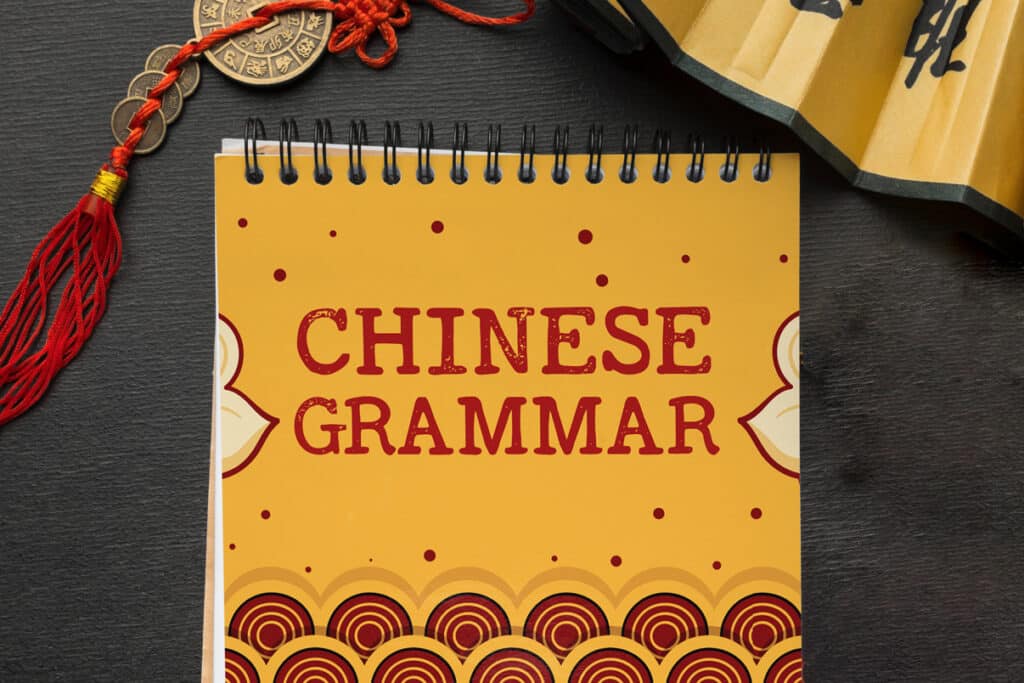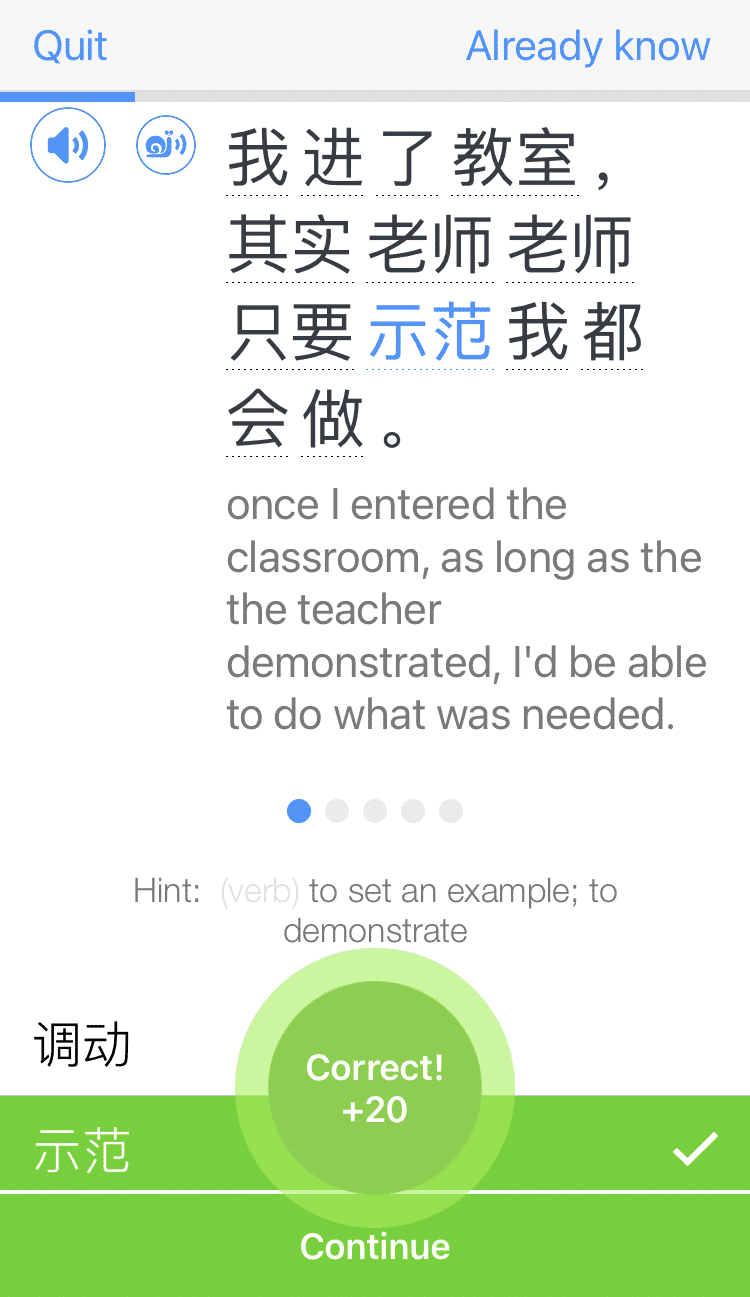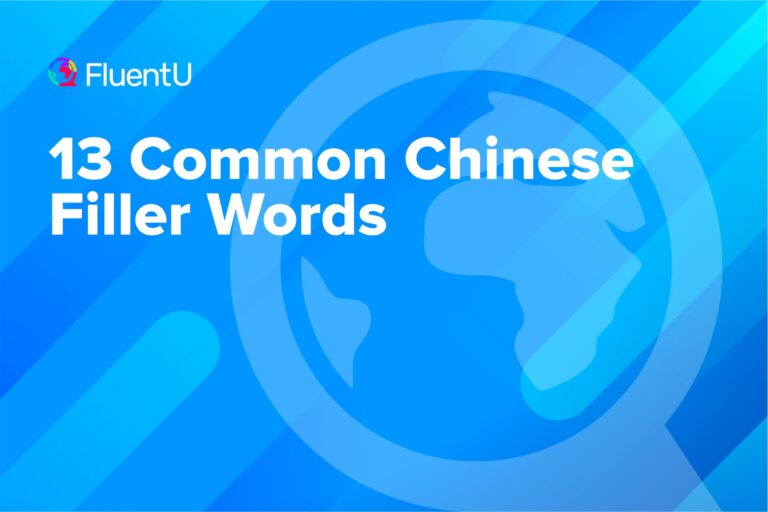Chinese Grammar: The Complete Guide to 15 Core Elements

Chinese grammar is logical, structural and simple. And to be completely honest, Chinese language structures make more sense to me than grammar rules of other languages—English included.
From measure words to basic sentence structures, learn all the key grammatical elements of the Chinese language system in this guide.
Download: This blog post is available as a convenient and portable PDF that you can take anywhere. Click here to get a copy. (Download)
1. Nouns
Let’s start with something easy and familiar.
Nouns in Chinese are the subjects and objects in sentences. In other words, a noun can carry out an action or have an action happen to it.
Be aware that nouns don’t need to be preceded by articles like “the” and “a/an,” since articles don’t exist in Chinese.
Gender
Another thing to look forward to with Chinese nouns is that they lack grammatical genders. You can take a breath now that you don’t have to worry about words being masculine or feminine!
Number
Plurals are yet another element that doesn’t exist for Chinese nouns, or at least not in the way it does in English.
Chinese characters don’t change in structure to indicate plurality. Instead, more characters are added to create a plural meaning, which you’ll learn more about in the “Numerals” and “Classifiers or Measure Words” sections of this post, and in this full blog post on the topic:
3 Easy Ways to Use Plurals in Chinese | FluentU Mandarin Chinese
The plural in Chinese doesn’t work the same way it does in English—that is, you can’t just tack on an -s. Luckily, you only need three grammatical tools to express that…
Placement
Since they can act as the subject or object of a sentence, Chinese nouns can appear before or after a verb.
Noun 1 (Subject) + Verb + Noun 2 (Object)
Types of Nouns
There are several familiar categories of Chinese nouns.
You’ve got your proper nouns that are the unique names of entities, like 中国 (zhōng guó) meaning “China.” You’ve also got common nouns that describe people, places or things, like 饺子 (jiǎo zi) meaning “dumpling.”
There are also some categories of nouns that are uniquely Chinese.
Time Nouns
As the name suggests, time nouns refer to specific timeframes, such as “today” or “last year.” Such timeframes only work as nouns and not as adverbs in Chinese.
Time nouns are normally placed before or after the subject.
昨天我所有的烦恼似乎都那么遥远。
(zuó tiān wǒ suǒ yǒu de fán nǎo sì hū dōu nà me yáo yuǎn.)
Yesterday, all my troubles seemed so far away.
Nouns of Locality
When talking about the physical position of a noun in relation to another, you’d use a Chinese noun of locality instead of a Chinese preposition.
To understand the difference between nouns of locality and prepositions, let’s look at the English prepositional phrase “on top of.”
In Chinese, the phrase can be summed up as the word or noun of locality 上面 (shàng mian), with no need to include any other parts of speech like prepositions or conjunctions.
Here’s an example sentence using the noun of locality 前 (qián):
你的手机就在你面前。
(nǐ de shǒu jī jiù zài nǐ miàn qián.)
lit. Your phone right at you face front.
Your phone is right in front of you.
Obviously, the literal translation is a bit strange, but the meaning is still pretty much the same as the proper English translation. It’s simply different interpretations of this particular part of speech.
2. Pronouns
On to pronouns! Chinese pronouns are quite easy, so this section should be a breeze.
In Chinese, pronouns are words that can be used in place of nouns so we don’t have to constantly repeat names, titles and objects when making statements.
Personal Pronouns
Personal pronouns are substitutes for names, titles and things.
These are the personal pronouns in Chinese.
我 (wǒ) — I, me
你 (nǐ) — you
他 (tā) — he, him
她 (tā) — she, her
它 (tā) — it
For plural personal pronouns, you’d just tack on a 们 (men) to the end of the pronouns, so 我们 would be “we/us.”
Keep in mind that there are no possessive pronouns in Chinese. To indicate possession, you’d simply add 的 (de), which works for both nouns and pronouns. When you add 的 to personal pronouns, 你的 and 他/她们的 become “your(s)” and “their(s).”
Check out the “12. Particles” section to learn more about the structural particle 的.
Demonstrative Pronouns
Demonstrative pronouns are words that point out objects. They can be used together with a noun (“this apple”) or on their own (“this [one]”).
这 (zhè) and 那 (nà), meaning “this” and “that,” are the bases of all demonstrative pronouns.
这个 (zhè ge) — this (one)
这 + classifier + object — this + object
那个 (nà gè) — that (one)
那 + classifier + object — that + object
To turn these into plurals, just add 些 (xiē).
这些 (zhè xiē) — these (ones)
那些 (nà xiē) — those (ones)
这些 and 那些 works for both specific and non-specific objects.
If you want to refer to a specific number of objects, you’d follow this formula:
这/那 + Number + Classifier
See the “8. Classifiers or Measure Words” section for more info.
Interrogative Pronouns or Question Words
Interrogative pronouns are also known as question words that will help you structure basic questions.
谁 (shéi/shuí) — who
什么 (shén me) — what
什么时候 (shén me shí hòu) — when
哪里 (nǎ lǐ) — where
哪 (nǎ) — which
怎么 (zěn me) — how
怎样 (zěn yàng) — how (to do something)
几 (jǐ) + classifier — how many
多少 (duō shǎo) — how much
16 Chinese Question Words You Need to Know | FluentU Chinese Blog
Chinese question words are essential to know. Click here to learn how to ask questions in Chinese using useful words like 什么, 多少, 怎么样 and more. Get plenty of…
3. Honorifics
When addressing strangers, elders and professionals, you want to be polite. It’s especially important in Chinese culture because of the custom of saving face.
In Chinese, these respectful titles used in place of personal pronouns are known as honorifics. It’s been in existence for ages, and even though some titles are extremely outdated, many are still used in everyday speech.
Like “madam” and “sir” in English, there are 女士 (nǚ shì) and 先生 (xiān shēng) in Chinese.
There are also honorifics for parents, like for 老妈 (lǎo mā) for “Mom” and 老爸 (lǎo bà) for “Dad.” Although 老 means “old” on its own, it’s more accurately translated as “elder” when used in an honorific.
Honorifics are also used for other family members, for recognizing occupational titles and within the workplace.
4. Verbs
Chinese verbs are words that represent the action or state of being of the subject. They also describe what is occurring between the subject and object of a sentence.
If tenses and conjugations stress you out, then you’re in for a treat, since there aren’t any in Chinese!
All you have to do is learn the “infinitive” (unconjugated) form of Chinese verbs and you’re golden!
30 Common Chinese Verbs for Beginner Mandarin Learners | FluentU Chinese Blog
Chinese verbs are a crucial component of the language. In this post, we’ll cover a number of useful verbs in Chinese and how to use them properly. There are plenty of…
When you want to change the timeframe of a verb, you’ll just add a little thing called an aspect particle! Head to the “Particles” section to learn more.
There’s a myriad of ways to categorize verbs, from action to psychological verbs, transitive vs. intransitive, stative vs. dynamic, etc. Unless you’re curious or a linguist, it’s not completely necessary to know all of these distinctions.
There are, however, some particularities in Chinese verbs that we do need to go over.
If you need some more help with using verbs or any other aspect of the Chinese sentence, the immersion program FluentU can help. This all-in-one tool lets you learn Chinese naturally, through videos with embedded learning features.
FluentU takes authentic videos—like music videos, movie trailers, news and inspiring talks—and turns them into personalized language learning lessons.
You can try FluentU for free for 2 weeks. Check out the website or download the iOS app or Android app.
P.S. Click here to take advantage of our current sale! (Expires at the end of this month.)
How to Say “To Be” in Chinese
In English, we’d use the verb “to be” to connect a description to a noun, whether it’s about their identity, state, location, you name it.
Chinese is a little more particular when expressing the verb “to be.”
是 (shì) is the most straightforward dictionary translation for “to be” and it’s worth spending a little time to master its usage.
是 (shì) in Chinese: How to Correctly Use the “To Be” Verb | FluentU Chinese Blog
What is 是 (shí)? It is the Chinese verb for “to be!” But how do we actually use it? I can tell you it’s not the same as how we use it in English. This guide will take…
是 is used to connect two nouns, basically describing one noun as another noun.
Noun + 是 + Noun
You can see it in the sentence below:
他是外国人。
(tā shì wài guó rén.)
He is a foreigner.
To say that a subject is an adjective, you’d need to use specific words like 很 (hěn). You’ll learn more about this under “Adjectives.”
But to indicate a noun’s location, you’d use a different “to be” verb: 在 (zài). It’s more accurately translated as “to be at.”
她在医院。
(tā zài yī yuàn.)
She‘s at the hospital.
Negation
Negation Using 不 (bù)
To negate a verb, or to say that you’re not carrying out an action, just add a 不 in front of the verb.
不 + Verb
Most verbs, such as words for “want” and “need,” can be negated with 不.
Let’s negate the verb 要 (yào) meaning “to want.”
我要 (wǒ yào) — I want
我不要 (wǒ bú yào) — lit. I no want / I don’t want
Negation Using 没/没有 (méi/méi yǒu)
One verb that cannot be negated by 不 is 有 meaning “to have.” To say “doesn’t/don’t have,” you’d say 没有.
没 is also used to express something that hasn’t happened yet.
Let’s negate a sentence using 不 and 没(有) so you can see the differences.
她不完成她的作业。
(tā bù wán chéng tā de zuò yè.)
lit. She no finish her homework.
She doesn’t finish her homework.
她没有完成她的作业。
(tā méi yǒu wán chéng tā de zuò yè.)
lit. She not have finish her homework.
She didn’t finish her homework.
By switching 不 out with 没(有), the meaning changed from the girl not ever finishing her homework to her potentially finishing her homework later on. It’s just as of this moment in time, her homework isn’t done yet.
The Ultimate Guide to 没有 (méi yǒu) in Chinese | FluentU Chinese Blog
You’ll probably need 没有 (méi yǒu) when 不 (bù) doesn’t do the trick. Though both can be translated as “no” or “not” in a sense, 没有 will help you say that you…
Verb Reduplication
If you want to sound more casual, or perhaps lighten your tone while making a demand, you can repeat the verb in a statement. This is called verb reduplication, and it’s mostly reserved for single-character verbs like 试 (shì) which means “to try.”
试试吧!(shì shì ba!) — lit. Try try! / Try it out!
You can also use 一 (yī), the character for “one,” to separate the repeating characters.
看一看。(kàn yí kàn) — lit. Look one look. / Have a look.
5. Adjectives
Chinese adjectives are any words that modify people or things in a sentence. To attach an adjective to a noun, certain words must be used in between.
Let’s look at the different ways to incorporate adjectives in Chinese sentences.
https://www.fluentu.com/blog/chinese/advanced-chinese-grammar/
Using Adjectives with 很 (hěn)
The first way is to pair it with 很. On its own, it means “very,” but it can be translated as the verb “to be” when you want to attach an adjective to a subject.
Subject + 很 + Adjective
For instance:
天空很蓝。
(tiān kōng hěn lán.)
The sky is (very) blue.
Note: Technically, you don’t actually have to use 很 to say, “The sky is blue.” 天空蓝 still means the same thing even though there technically isn’t a verb. But more often than not, learners will include 很 to make it a little easier to understand and translate.
The 50 Most Useful Chinese Adjectives for Everyday Conversation | FluentU Chinese Blog
Click here to get a list of 50 Chinese adjectives to help you describe people, weather, food and more! Learn descriptive words like 酸 (sour), 难看 (bad looking),…
Using Adjectives with 的 (de)
Another way to use Chinese adjectives is with the help of the character 的, which would go in between an adjective and a noun.
Adjective + 的 + Noun
You can see how 的 works in this statement:
这么小的脚!
(zhè me xiǎo de jiǎo!)
lit. Such small of feet
What tiny feet!
Using Adjectives with 又 (yòu)…又
To use two adjectives, you can use this formula featuring the adverb 又, which actually means “again” when used on its own.
又 + Adjective 1 + 又 + Adjective 2
This would roughly translate to “to be…and…”
他又大又高。
(tā yòu dà yòu gāo.)
He is big and tall.
28 Must-know Chinese Adjectives to Describe a Person | FluentU Chinese Blog
Want to compliment your host family? Or complain about your coworker? Click here ton learn 28 Chinese adjectives to describe a person (some nice and others not-so-nice).…
Comparatives and Superlatives
Comparatives are adjectives that draw comparisons between two objects, while superlatives are used to describe objects as the highest degree of an adjective.
In Chinese, there are specific words you can use alongside an adjective if you want to create comparatives and superlatives.
To say “the biggest cookie,” you would use 最 (zuì) and then use the Adjective + 的 + Noun formula.
最大的饼干 (zuì dà de bǐng gān) — The biggest cookie
6. Adverbs
Chinese adverbs are descriptive words that can modify verbs and adjectives. They can also modify other adverbs to indicate the degree of the description, like the word 最 which we previously encountered in “Comparatives and Superlatives.”
It can be a little tricky navigating Chinese adverbs, as translations sometimes blur the lines between adverbs, adjectives and sometimes even verbs.
But it’s nothing to really fret about. As you come across new adverbs, you’ll learn where they’re supposed to be placed and the roles they play in sentences.
48 Chinese Adverbs You Need to Sound More Native | FluentU Chinese Blog
Chinese adverbs are an essential part of making sentences that sound like native speakers. Click here to learn the 48 most important Chinese adverbs (like 偶尔,…
Adverbs of Time, Frequency and Place
Generally, adverbs related to time, frequency and place are located in between the subject and verb.
Subject + Adverb of Time/Frequency/Place + Verb
You can see it in this example:
我马上到了。
(wǒ mǎ shàng dào le)
lit. I immediately arrived.
I’ll be there soon.
Adverbs of Manner
Adverbs of manner, or adverbs describing how the action was carried out, can be placed before or after the verb as shown in the two examples below:
他几乎不做饭。
(tā jī hū bú zuò fàn.)
He hardly cooks.
老人开得很慢。
(lǎo rén kāi dé hěn màn.)
The elderly man drives (very) slowly.
Some adverbs of manner can double up as the verb of the sentence, like 非常 (fēi cháng) in this sentence:
咖啡非常烫。
(kā fēi fēi cháng tàng.)
lit. Coffee very hot.
The coffee is very hot.
Adverbials
Adverbials are kind of like extended adverbs—they describe the time, manner and location associated with the verb of the sentence. If you want to level up your grammar, you should definitely practice creating adverbials.
Adverbials are always placed in between the subject and the verb.
It’s pretty rare for adverbials to include time, manner and location, but if you want to include all of that info, just remember to mention them in that order.
我立刻从座位上站了起来。
(wǒ lì kè cóng zuò wèi shàng zhàn le qǐ lái)
lit. I immediately from the seat stood up.
I immediately stood up from my seat.
7. Numerals
I love the logic of Chinese numbers.
If you want to be able to count to over 10,000, you only really need to know 13 characters.
一 (yī) — one
二 (èr) — two
三 (sān) — three
四 (sì) — four
五 (wǔ) — five
六 (liù) — six
七 (qī) — seven
八 (bā) — eight
九 (jiǔ) — nine
十 (shí) — ten
一百 (yì bǎi) — 100
一千 (yì qiān) — 1,000
一万 (yí wàn) — 10,000
Knowing these will help you build much larger numbers, like the ones below.
十七 (shí qī) — 17
九十九 (jiǔ shí jiǔ) — 99
三百六十五 (sān bǎi liù shí wǔ) — 365
二千二 (èr/liǎng qiān èr) — 2,002
五十二万五千六百 (wǔ shí èr wàn wǔ qiān liù bǎi) — 525,600
Chinese Numbers Guide: How to Count from 1-1000 and Beyond | FluentU Chinese Blog
Learn Chinese numbers 1-1000 with this complete guide, which teaches you how to count in Chinese with simple rules for forming numbers, all the way up to a billion!…
Ordinal Numbers
Ordinal numbers are what you’d use to show the rank of a noun, like “first place” or “seventh sin.”
Thankfully, you don’t need to learn a whole new set of words for Chinese ordinal numbers.
All you need to do is add 第 (dì) before a number, so “seventh” and “thirteenth” would be 第七 (dì qī) and 第十三 (dì shí sān).
If you want to describe a specific object’s rank, just use the formula below:
第 + Number + Classifier + Object
You’ll learn more about classifiers in the next section, but here’s an example using that formula:
第九十九个问题 (dì jiǔ shí jiǔ gè wèn tí) — lit. The 99th of problem / The 99th problem
Approximate Numbers
For vague sums of numbers, these are some of the words you can use:
几 (jǐ) — a value between two and nine; some, several
十几 (shí jǐ) — more than 10; dozen
几十 (jǐ shí) — a value between 20 and 99; tens of; dozens
≥10 + 多 (duō) + Classifier — more than any number greater than or equal to 10
<10 + Classifier + 多 — more than any number less than 10
8. Classifiers or Measure Words
Chinese is a little particular when it comes to quantifying objects. Rather than outright saying, “six apples,” you’d have to say something close to, “six of apples.”
That “of” is what’s called a classifier or measure word in Chinese. It’s basically a quantifier that connects a number to the noun in question, which is how plurals work in Chinese.
Number + Measure Word + Noun
Note that this formula works with exact, ordinal and approximate numbers.
So “six apples” would be 六个苹果 (liù gè píng guǒ) rather than 六苹果, where 个 is the measure word.
While 个 can be used as a general classifier, most objects have specific measure words they need to be paired with.
For example, the appropriate classifier for clothes is 件, with the exception of socks.
三件衬衫 (sān jiàn chèn shān) — three shirts
And anything that comes in pairs, like socks, would be 双 (shuāng).
十双袜子 (shí shuāng wà zi) — ten pairs of socks
Verbal Classifiers
There are also classifiers for verbs, which are used to indicate the number of times an action has occurred. The most commonly used verbal classifier is 次 (cì).
Verb + Number + Verbal Classifier
Here’s what a verbal classifier looks like in a sentence:
他去过水疗中心几次。
(tā qù guò shuǐ liáo zhōng xīn jǐ cì.)
He’s been to the spa several times.
9. Onomatopoeia
Like any other language, Chinese has onomatopoeia or its own interpretations of noises and sounds.
Let’s take a look at laughter.
English has a ton of variations of laughing onomatopoeia, such as “haha,” “hehe” and “teehee.” It’s the same in Chinese.
哈哈 (hā hā) — haha
呵呵 (hē hē) — haha
嘿嘿 (hēi hēi) — hey hey; a cross between haha and hehe
嘻嘻 (xī xī) — snicker
In addition to human sounds, there’s onomatopoeia for animals, collisions and nature. Most of the time, you’ll see onomatopoeia reduplicated as shown above, though there are also additional patterns.
The Complete Guide to Onomatopoeia in Chinese | FluentU Chinese Blog
Onomatopoeia in Chinese are words that represent animated sounds, like barking and water dripping. Click here to learn 39 common Chinese onomatopoeia, like 轰 (boom),…
10. Prepositions or Coverbs
The parts of speech mentioned up until this point are known as “content words” or 实词 (shí cí). Content words are elements that describe actions, objects or ideas.
And then there are “function words” or 虚词 (xū cí). Function words describe the relationship between content words, such as prepositions. Prepositions indicate a noun’s position or direction relative to another noun.
In Chinese, prepositions are often referred to as coverbs since they’re actually derived from verbs.
Take a look at 在, a verb that translates as “to be at” that can also function as the preposition “at.”
I’ve used 在 as both a verb and preposition in my examples throughout the guide, but I’ll give you a couple more so you can compare them easily.
在 as a verb:
妈妈在家吗?
(mā mā zài jiā ma?)
lit. Mom is home?
Is Mom home?
在 as a preposition:
你不能坐在这里。
(nǐ bù néng zuò zài zhè lǐ.)
lit. You can’t sit at here.
You can’t sit here.
As you can see, the Chinese idea of “at” doesn’t always translate into English. Also, take note that the prepositional 在 is always followed by a noun of locality.
在 + Noun of Locality
Other Chinese prepositions are also specific to certain nouns or verbs. You can find prepositions before or after verbs, between nouns, etc. Because of this, you’ll have to just learn the appropriate sentence patterns as you come across new prepositions.
25 Common Chinese Prepositions and How to Use Them | FluentU Chinese Blog
Chinese prepositions are small but important: They help you understand how other parts of a sentence relate to each other. The little linking words in this post will help…
11. Conjunctions
Conjunctions are another category of function words.
Chinese conjunctions are little words used to connect ideas in a sentence. There are those that describe coordinating “and” relationships, alternative “or” relationships, adversative “but” relationships, conditional “if” relationships, among others.
Some Chinese conjunctions are specifically used to connect words or phrases, like 和 (hé) meaning “and.”
这些和那些 (zhè xiē hé nà xiē) — these and those
11 Ways to Say “And” in Chinese [With Audio and Quiz] | FluentU Chinese Blog
There are lots of ways to say “and” in Chinese. 和 (hé) might be your go-to translation, but there are plenty of other ways to connect two things in Mandarin and vary…
Other Chinese conjunctions are used to connect clauses or sentences.
我想去海滩,但下雨了。
(wǒ xiǎng qù hǎi tān, dàn xià yǔ le.)
I want to go to the beach but it’s raining.
In some cases, two conjunctions can be used in a sentence, like 因为 (yīn wéi) and 所以 (suǒ yǐ) which mean “because” and “therefore” when used separately.
因为今天我生病了,所以我没有去上班。
(yīn wéi jīn tiān wǒ shēng bìng le, suǒ yǐ wǒ méi yǒu qù shàng bān.)
Because I’m sick today, I didn’t go to work.
12. Particles
Particles are function words pronounced with the neutral fifth tone. They also don’t mean anything on their own. However, they do impart meaning when they’re included in sentences.
Particles are used to define the mood, time or relationship between sentence elements.
There are three categories of particles. Some particles have multiple functions and fall under more than one category.
Modal Particles
Literally translated as “tone words,” modal particles determine the mood or attitude of a statement.
A common modal particle would be 啊 (a), which is used to heighten the emotion of a statement. 啊 adds excitement or a sense of urgency.
快点啊!
(kuài diǎn a!)
lit. Fast a bit!
Hurry up!
吗 (ma), 吧 (ba) and 呢 (ne) are additional examples of modal particles that you can learn more about under the “Questions” section.
https://www.fluentu.com/blog/chinese/chinese-particles/
Aspect Particles
Since Chinese doesn’t operate with tenses, it relies on something called aspect particles.
Aspect particles indicate how a verb works in a given timeframe. They can show if an action is complete, ongoing, was ongoing for a period of time, etc.
了 (le) is an aspect particle that indicates a complete action. It’s like the simple past tense in English.
他们提前离开了派对。
(tā men tí qián lí kāi le pài duì.)
lit. They early left party.
They left the party early.
了 can also work as a modal particle to show a sudden change in circumstance or state.
Structural Particles
Lastly, structural particles are there to describe the relationship between content words. You can think of them as the glue that connects content words.
We’ve actually already come across a structural particle. Remember 的?
To reiterate, 的 is used to create the equivalent of English possessive pronouns and generally shows one noun belonging to another.
Noun + 的 + Noun
Here’s an example:
我们的假期 (wǒ men de jià qī) — Our vacation
We’ve also already learned that it’s used to attach an adjective to a noun.
Another example of a structural particle is 得 (de), which is used to modify verbs.
Verb + 得 + Complement
The complement is a phrase that describes the degree to which the action is done. In the phrase “sing really well,” “really well” would be the complement.
Here’s what it would look like in Chinese:
唱得很好 (chàng de hěn hǎo) — Sing really well
13. Sentence Structure
Let’s talk about the basic sentence structures in Chinese that begin with the subject.
As you progress, you’ll learn some other constructions, but it’s best to start with SVO sentences before getting more creative with your sentences.
Basic Sentence Formulas
Subject + Verb + (Object)
Here’s one you should be very familiar with. Like in English, the most basic sentence structure in Chinese is SVO.
他吃牛排。
(tā chī niú pái.)
He eats steak.
You can also have sentences without an object.
妈妈工作。
(mā mā gōng zuò.)
Mom works.
Subject + Time When + Verb + (Object)
If you want to indicate an exact time for an action, you’d use this formula.
Let’s build off that SV sentence:
妈妈周末工作。
(mā mā zhōu mò gōng zuò.)
lit. Mom weekend works.
Mom works (on) weekends.
Subject + Time When + Location + Verb + (Object)
To add a location to that sentence, you’d add the preposition 在 + location in between the time when and the verb.
妈妈周末在图书馆工作。
(mā mā zhōu mò zài tú shū guǎn gōng zuò.)
lit. Mom weekend at the library works.
Mom works at the library on weekends.
Subject + Time When + Verb + Location
If there is no object in the sentence, another way to incorporate location is by placing it at the end of your statement.
妈妈周末工作在图书馆。
(mā mā zhōu mò gōng zuò zài tú shū guǎn.)
lit. Mom weekend works at the library.
Mom works at the library on weekends.
Subject + Time When + Location + Verb + (Object) + Time Duration
Need to add more details? If you want to add a timeframe within the time when the action is carried out, place that time duration at the end of the statement.
妈妈周末在图书馆工作十个小时。
(mā mā zhōu mò zài tú shū guǎn gōng zuò shí gè xiǎo shí.)
Mom weekend at the library works ten hours.
Mom works at the library for ten hours on weekends.
5 Basic Chinese Sentence Structures to Ease You into Grammar | FluentU Chinese Blog
Ready to start building sentences in Chinese? It’s actually easier than you think, especially since Chinese sentence structures include the very familiar…
Sentences Using 把 (bǎ)
The 把 sentence construction can be a bit challenging, and it doesn’t follow the basic sentence constructions mentioned above.
To put it simply, 把 sentences are used to emphasize what happened to or needs to be done to an object. This is different from the basic sentence patterns since the focus is on the subject doing the action.
It’s almost like the difference between “She takes out her wallet” and “She takes her wallet out of her pocket.”
In the first sentence, the spotlight is on the action of the woman, while the second sentence draws more attention to what’s specifically been done to the object.
There are certain conditions where a 把 sentence would be used:
- The object of the sentence had to be previously discussed.
- The verb is attached with specific details.
The most basic 把 construction looks like this:
Subject + 把 + Object + Verbal Phrase
Going back to that example from earlier, here’s what it would look like in Chinese:
她把钱包从口袋里拿了出来。
(tā bǎ qián bāo cóng kǒu dài lǐ ná le chū lái.)
lit. She put wallet from pocket inside take out.
She takes her wallet out of her pocket.
Although 把 on its own means “put” in English, it doesn’t get translated in a 把 sentence.
Questions can also be formed using the 把 construction, which you can read more about in the next section or in the post below.
How to Use Ba in Chinese Correctly: All Usages + Practice Tips | FluentU Chinese Blog
The Chinese ba (把) grammar structure lets you create SOV (subject-object-verb) sentences, but there’s more to it than that. Read this guide to learn how to use ba in…
14. Questions
Chinese: 问题 (wèn tí)
There are lots of different ways to ask questions in Chinese. Although some question formulas may be a little unfamiliar to you, they’re pretty straightforward.
There are a few ways of forming questions, such as using question words/interrogative pronouns or adding modal particles.
Questions Using Interrogative Pronouns
There are four basic formulas for forming questions featuring interrogative pronouns and other question words:
Question Word + Verb + (Object)
This one is similar to WH-questions in English and mostly for the question word 谁, as seen below:
谁要薯条?
(shuí yào shǔ tiáo?)
Who wants fries?
Question Word + Subject + Verb + (Object)
This is also a familiar format for English speakers which is used for the question word 哪个:
哪个有花生?
(nǎ gè yǒu huā shēng?)
Which (one) has peanuts?
Subject + Verb + Question Word + (Object)
Here’s where question formulas stray from English. This is the most common format, normally used for the question words like 哪里, 哪个, 什么, 什么时候 and 几个.
Subject + 是 +谁?
Here’s an example:
你要几个?
(nǐ yào jǐ gè?)
lit. You want how many?
How many do you want?
It’s also used for questions asking, “Who is he/she?”
他们是谁?
(tā men shì shuí?)
lit. They are who?
Who are they?
Subject + Question Word + Verb + (Object)
This is the format for 什么, 什么时候 and 怎么.
你什么时候离开?
(nǐ shén me shí hòu lí kāi?)
lit. You when leave?
When do you leave?
Questions Using 吗 (ma)
If you want to ask simple Y/N questions in Chinese, you need to use the modal particle 吗.
These are super easy to formulate since you just tack 吗 onto the end of a sentence. This works with SVO sentences and other basic sentence structures.
To show you how effortless it is, take a look at the statement below:
她付账单。
(tā fù zhàng dān.)
She pays the bills.
Add 吗 and you get:
她付账单吗?
(tā fù zhàng dān ma?)
Does she pay the bills?
Although there is no direct translation for 吗, it’s often understood as the auxiliary verb in English Y/N questions.
How to Practice Tones and Questions with the Chinese Ma | FluentU Chinese Blog
The Chinese ma is a tiny particle word with multiple meanings, usages and tones. Click here to learn what you need to learn about “ma” in Chinese, plus how it can make…
Questions Using 吧 (ba)
吧 is reserved for questions where you’re seeking confirmation or looking for the person to agree with you. This is still kind of like a Y/N question where you’re expecting the answer to be “yes.”
Many learners tend to mix up 吧 and 吗 since they’re both used in Y/N questions. But if you take a bit of time to understand their nuanced grammatical uses, it’s actually not that difficult.
13 Useful Chinese Grammar Structures for Beginners | FluentU Chinese Blog
These 13 Chinese grammar structures are key to communicating in Chinese because of how often they’re used. Learn all about them in this guide, which includes examples and…
In English, it’s the equivalent of adding “is/isn’t it?” or “right?” to the end of a statement.
Let’s use the sentence below as an example:
今天是最后期限。
(jīn tiān shì zuì hòu qī xiàn.)
Today is the deadline.
Add 吧 to the end and your statement turns into a question seeking confirmation:
今天是最后期限吧?
(jīn tiān shì zuì hòu qī xiàn ba?)
Today is the deadline, isn’t it?
If you want the person to agree with you instead of asking for confirmation, you’d use 对吧 (duì ba) instead. This is slightly more nuanced but it’s important to understand the differences here:
今天是最后期限,对吧?
(jīn tiān shì zuì hòu qī xiàn, duì ba?)
Today is the deadline, right?
Questions Using 呢 (ne)
The modal particle 呢 is used to form “how/what about” and “and you?” questions. It comes up in conversation as a question after a statement is made.
Statement. Subject + 呢?
Here’s an example:
我不吃肉。你呢?
(wǒ bù chī ròu. nǐ ne?)
I don’t eat meat. What about you? / How about you?/ And you?
You can also use 呢 when you want to ask where someone or something is. It’s also an alternative to a 哪里 question, normally working as a follow-up instead of a standalone question.
Missing object + 呢?
This is what it would look like in a dialogue:
A: 厨房在哪里?
(chú fáng zài nǎ li?)
Where’s the kitchen?
B: 在走廊尽头。
(zài zǒu láng jìn tóu.)
At the end of the hallway.
A: 厕所呢?
(cè suǒ ne?)
Where’s the bathroom? / What about the bathroom?
The 6 Main Uses of the Chinese Ne (呢) Modal Particle | FluentU Chinese Blog
Chinese 呢 (ne) is one of the most common and easiest particles you’ll use in Mandarin. Asking questions, expressing continuation and contrast, differentiating it from…
15. Punctuation Marks
Last but not least, we have Chinese punctuation!
Knowing these tiny little marks makes a huge impact when it comes to learning Chinese grammar, helping you separate ideas correctly when writing in Chinese.
Chinese punctuation marks are pretty simple, with many of them looking and functioning similarly to the ones in English.
?问号 (wèn hào) — Question mark
!叹号 (tàn hào) — Exclamation mark
:冒号 (mào hào) — Colon
;分号 (fēn hào) — Semicolon
()括号 (kuò hào) — Parentheses
The difference between these Chinese and English punctuation marks is only evident when typing. Typed Chinese punctuation normally includes a space after the mark—unless it’s an open parenthesis or quotation mark where the space precedes the mark.
Here are a couple of other familiar punctuation marks with slight stylistic variations.
,逗号 (dòuhào) — comma
。句号 (jùhào) — period
Of course, there are more variations of punctuation marks, as well as ones that are found just in Chinese.
One uniquely Chinese punctuation mark is the enumeration comma, which is used in place of the regular comma when listing multiple objects in a sentence.
、顿号 (dùnhào) — enumeration comma
This is what it looks like in a sentence:
我需要买鸡蛋、面包、牛奶和橙汁。
(wǒ xū yào mǎi jī dàn, miàn bāo, niú nǎi hé chéng zhī.)
I need to buy eggs, bread, milk and orange juice.
Note: Chinese punctuation marks are reserved for Chinese characters only. Use English punctuation marks for pinyin.
You made it!
I know that was a lot, but don’t worry if you don’t nail all these concepts right away. After all, understanding the logic behind the rules is already more than half the battle. Just hang in there, or 加油 (jiā yóu)!
And One More Thing...
If you want to continue learning Chinese with interactive and authentic Chinese content, then you'll love FluentU.
FluentU naturally eases you into learning Chinese language. Native Chinese content comes within reach, and you'll learn Chinese as it's spoken in real life.
FluentU has a wide range of contemporary videos—like dramas, TV shows, commercials and music videos.
FluentU brings these native Chinese videos within reach via interactive captions. You can tap on any word to instantly look it up. All words have carefully written definitions and examples that will help you understand how a word is used. Tap to add words you'd like to review to a vocab list.
FluentU's Learn Mode turns every video into a language learning lesson. You can always swipe left or right to see more examples for the word you're learning.
The best part is that FluentU always keeps track of your vocabulary. It customizes quizzes to focus on areas that need attention and reminds you when it’s time to review what you’ve learned. You have a 100% personalized experience.
Start using the FluentU website on your computer or tablet or, better yet, download the FluentU app from the iTunes or Google Play store. Click here to take advantage of our current sale! (Expires at the end of this month.)











